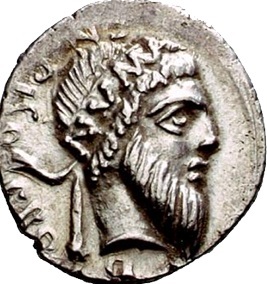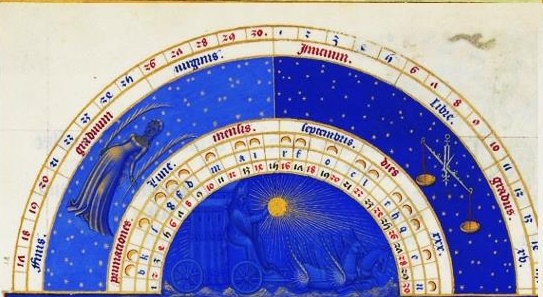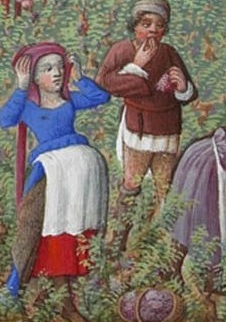Change in the natural world is subtle but relentless, seasons seem to give way gently to one another, even if the monthly motion is so swift, we don’t realize we are moving. However, when the leaves start turning colours, it’s time for turning over a personal new leaf so that our lives might be restored.
Why don’t make the effort that would provide something new in our lives? January negative resolutions are made when we are worn out in spirit, body, pocketbook, and have no real urge to do anything but rest.. It seems to me that January resolutions are about will; September resolutions are about authentic wants. What do you want more or less of in your life. The beauty of autumn resolutions is that one else knows we are making them. Autumns resolutions don’t required horns, confetti, and champagne. September resolutions ask only that we be open to positive change. So can you to do that.
Since ancient time, September also has been viewed at the beginning and time for reflection and resolution.

Two men crushing grapes on the September panel from the 3rd-century mosaic of the months at El Djem, Tunisia (Roman Africa)
September was the seventh month that had a length of 30 days in the Roman calendar. In this calendar, the year began in March. It became the ninth month with a length of 29 days when King Numa Pompilius the legendary second king of Rome, succeeding Romulus.
He reformed the calendar and added the months of January and February around 700 BCE. Julius Caesar added one day to the month making it 30 days long.
September become ninth month of the Year in the Julian and Gregorian calendar and was the seventh month in the Roman calendar. It marks the ecclesiastical year in the Easter Orthodox Church. However, if you want see more about the medieval calendar served as a map of the Church year see this fantastic video.
http://www.youtube.com/watch?v=h2CcewghKoo
September marks the beginning of the season and this is as true today as it was on the pages of medieval manuscript calendar. So, time for conservation adventure. The one of the most beautiful picture of the September in Late Medieval is manuscript The Très Riches Heures.

Tres Riches Heures du Duc de Berry created by the Limbourg Brothers—three of the greatest illuminators in Europe (1412- 1416)
It was created by the Limbourg Brothers—three of the greatest illuminators in Europe—for one of the most famous art patrons of all time, Jean de France, duc de Berry (1340–1416). The son, brother, and uncle to three successive kings of France, Jean de France commissioned luxury works in many media—from chalices to castles—without regard for cost, but is best remembered for his patronage of manuscripts. The Très Riches Heures is just one example of a manuscript that truly exemplifies Medieval art at its finest. In addition to being lavishly illustrated with copious amounts of lapis lazuli, gold leaf, and all that other stupidly expensive stuff, the Très Riches Heures also features illustrations that reveal Medieval attitudes toward social class, the feudal system, and life in general. The illustrations of the months in the Très Riches Heures are exceptional and innovative in their size, and the best known element of the decoration of the manuscript. Limbourg’s innovation of a full-page miniature, though most had smaller pages than here. They were also unprecedented in mostly showing one of the duke’s castles in the background. Each illustration is surmounted with its appropriate hemisphere showing the signs and degrees of the zodiac, and numbering the days of the month and the martyrological letters for the ecclesiastic lunar calendar. Each month of the calendar is allotted an opening of two pages, on the right and page the calendar listing notable feast days and on the left the miniature.
The September miniature with the Château de Saumur was almost certainly painted in two phases: first, the upper section
and château was painted in the middle of the fifteenth century, around 1438-1442, in the time of René d’Anjou and Yolande d’Aragon; then the lower scene of grape-picking was completed by Jean Colombe. In general, artists started with the background, then painted in the characters before finishing with their faces.
In the foreground, it is grape-picking time. The woman in a white and red apron looks pregnant. Other young peasants are picking the purple bunches, while one of them is tasting the grapes. A further character holding a basket is walking towards a mule which is carrying two panniers. The grapes are being loaded either into the mules’ panniers or into the vats on the cart pulled by two oxen. In the background stands the Château de Saumur with its chimneys and weathervanes decorated with golden fleurs-de-lys. It was built by Louis II d’Anjou then given to his wife Yolande d’Aragon, the mother of King René and mother-in-law of Charles VII, over whom she had a considerable sway. The presence of this château can be explained by the important role played by Yolande in the early years of the reign of Charles VII and by how much the king enjoyed staying there. On the left, behind the enceinte, stands a clock-tower the chimneys of the kitchens and a gate leading to a drawbridge. A horse is coming out and a woman with a basket on her head is on her way in. In front of the château, between the vines and the moat can be seen a tilting ground surrounded by palisades, where tournaments were held. The towers conceal their protective nature beneath festive trappings, redolent of fabulous adventures in the forests of Arthurian legends and suggestive of the presence of God in His creation. As François Cali put it: “These extravagant towers are a dream landscape with constellations of canopies, pinnacles, gables and arrows, with their crockets fluttering against the light.” In the middle of the grape pickers, a character is showing his behind. This intentionally grotesque touch contrasts with the extraordinary elegance of the château. The calendar is extraordinary in its format and scale. The calendar of the Très Riches Heures constitutes what termed a family album for duke and is the naturalistic portrait early fifteen century.
September Château de Saumur was originally built as a castle and later developed as a château, is located in the French town of Saumur, in the Maine-et-Loire département. It was originally constructed in the 10th century by Theobald I, Count of Blois, as a fortified stronghold against Norman predations. It overlooks the confluence of the Loire and the Thouet. In 1026 it came into the hands of Fulk Nerra, count of Anjou, who bequeathed it to his Plantagenet heirs.
Following its destruction in 1067, the castle was rebuilt by Henry II of England in the later 12th century. In 1621 the castle was converted into an army barracks. Nearly two centuries later it was converted into a state prison under Napoleon Bonaparte however that is another story.
Through this September we must be doing something about bringing our dream into world every day, even if we only have fifteen minutes out of every twenty four hours and please remember that conservation is either adventure or nothing .
Ella












